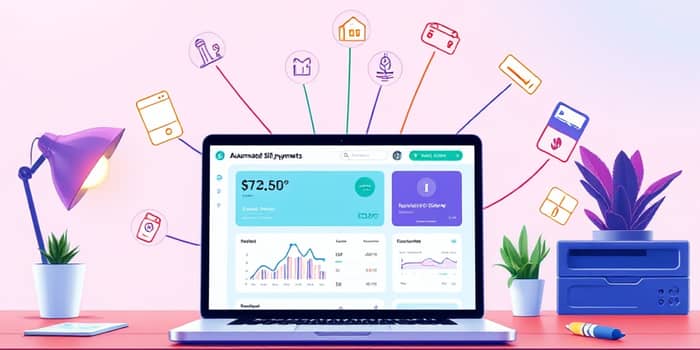
Managing multiple bills each month can be overwhelming. Between tracking due dates, logging into various portals, and ensuring sufficient funds, it’s easy to miss a payment—and pay for it with late fees or credit score damage. By setting up automatic bill payment, you can simplify your finances, avoid penalties, and reclaim precious time.
In this comprehensive guide, we’ll explore the mechanics, benefits, risks, and best practices of automating your recurring payments, supported by recent data and expert insights.
Automatic bill payment (ABP) is a service offered by banks, credit unions, and financial apps that processes your recurring bills—such as utilities, loans, and subscriptions—on a preset schedule. Once you enroll, payments are deducted directly from your designated account or charged to your credit card, eliminating manual transfers each month.
The typical setup involves:
Once configured, payments run seamlessly in the background. You can review past transactions, download receipts, and adjust schedules as your financial situation evolves.
Automation brings multiple advantages for individuals and businesses alike:
While automation offers clear perks, it’s essential to understand possible drawbacks:
Late payments carry a steep price tag. U.S. consumers pay over $14 billion annually in credit card late fees. The average fee—including recent caps—stands at $32, compared with $8 under new regulations. These changes could save families up to $10 billion per year, or about $220 per person among fee payers.
Beyond fees, late payments can harm your credit score. A single missed payment may stay on your report for seven years, elevating borrowing costs and restricting credit access.
On-time payment history is a critical component of major credit scoring models like FICO and VantageScore. Lenders view consistent punctuality as a gauge of reliability. Conversely, late marks can lower your score by dozens of points, translating to higher interest rates on mortgages, auto loans, and credit cards.
By automating payments, you build a pattern of consistent reliability. Each successful transaction reinforces your creditworthiness, unlocking better rates and broader lending opportunities.
The Consumer Financial Protection Bureau (CFPB) has intervened to protect consumers from excessive late fees. New regulations cap credit card late fees at $8, curbing issuers’ ability to harvest penalties. While some industry groups argue this could backfire—prompting higher interest rates or reduced fee discounts—the move prioritizes consumer relief.
Regulatory scrutiny extends to billing transparency. The CFPB and Federal Reserve promote clear disclosures around automatic payments, requiring lenders to outline payment timing, methods to cancel or pause, and potential overdraft risks.
To harness automation effectively, follow these best practices:
Leading ABP platforms feature robust security measures:
Data encryption safeguards your details in transit and at rest. Multi-factor authentication adds a secondary layer of defense. Real-time monitoring flags suspicious charges, and digital receipts help you reconcile every transaction.
For extra protection, consider maintaining a dedicated checking account for automated bills. Fund it with exactly enough to cover recurring outflows—this minimizes exposure if fraud occurs.
Not every expense should be automated. Court-ordered payments, tax obligations, and occasional large invoices often require manual handling to ensure accuracy and compliance. Automation is a tool—not a substitute for vigilant financial oversight.
Automating bill payments is more than a convenience—it’s a strategic move to protect your credit, eliminate late fees, and streamline your financial life. By combining automation with mindful monitoring and smart scheduling, you can transform a monthly chore into a hands-off, reliable process.
Embrace the technology, set up your automated payments, and enjoy the peace of mind that comes from knowing your bills will never slip through the cracks again.
References













